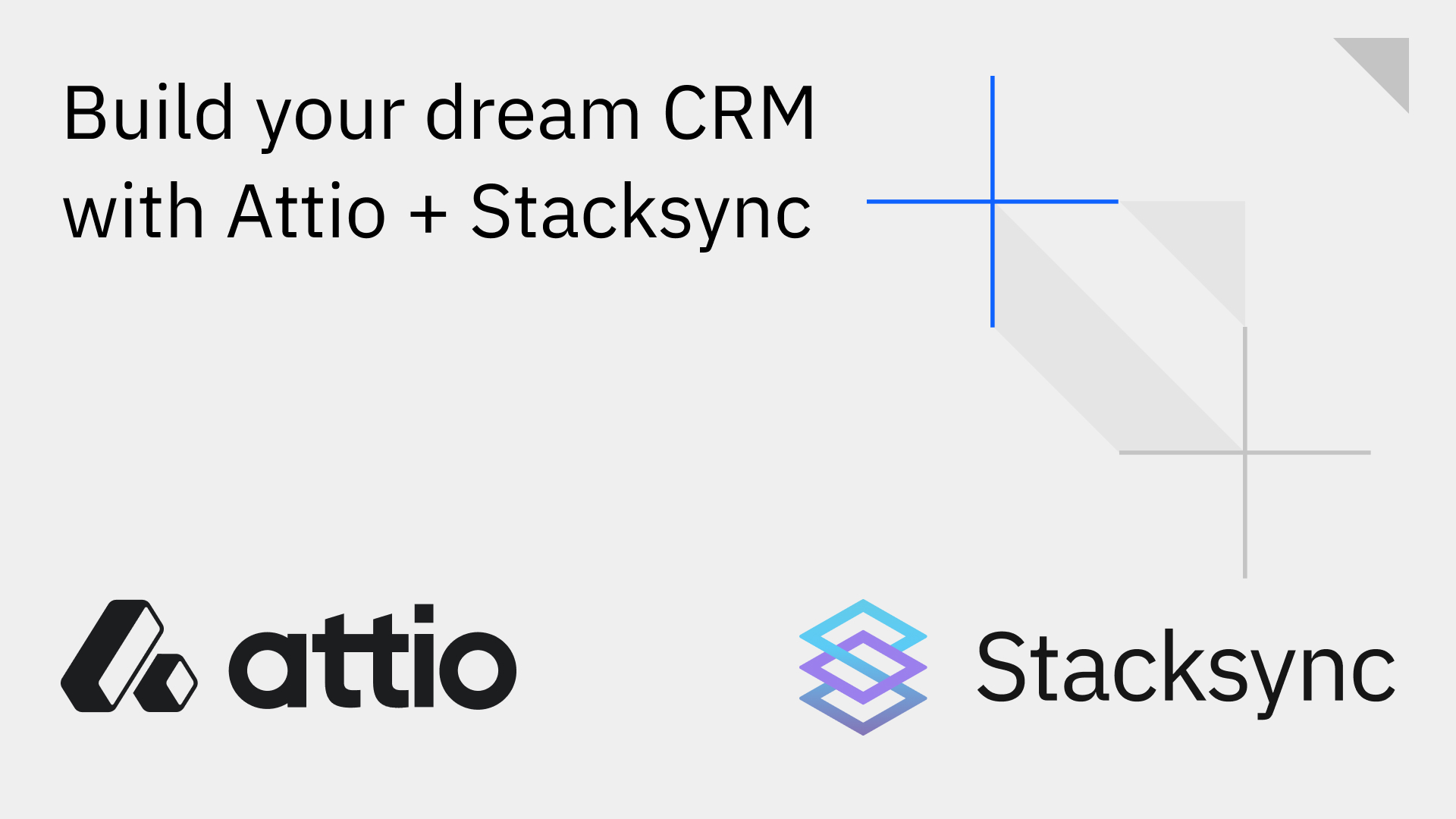Attio is a highly customizable, unopinionated CRM designed for go-to-market teams. With Attio, you can easily create custom objects and attributes, then enrich those objects by syncing data from your other tools.
This makes Attio especially powerful for product-led growth motions. Many CRMs are designed around a standard data model of Contacts > Accounts. Changing that data model to fit your business - like having many Users in one Workspace, not all of whom work at the same Company - can be an exercise in frustration.
That's why the Stacksync <> Attio connector is one of our most popular integrations. When you've designed your CRM around your data model, the next step is to get data in there.
Common data pipeline challenges
Building and maintaining data pipelines manually is a daunting task, especially for fast-moving teams at product-led growth (PLG) businesses. You might have run into these problems before:
- It takes a lot of development time: Integrating Attio via APIs means dealing with authentication, pagination, rate limits, and data transformations. You'll also need to set up your own monitoring and error handling to ensure syncs don't fail silently.
- Every tool has its own requirements: Let's say your business uses Attio for sales, Zendesk for customer support, and Supabase as a product database. Each of these has its own API, authentication methods, and rate limits. The engineering effort needed to build two-way syncs between each tool increases quickly.
- There's a maintenance overhead: Manually built pipelines often break when APIs change. If you don't have any monitoring set up, it can take a while for someone to notice.
For companies that rely on accurate, up-to-date CRM data, these challenges can result in more time spent on engineering workarounds than business growth.
Stacksync’s solution: no-code, bi-directional syncs
Our new Attio connector directly addresses these pain points. Here’s how:
- No-code setup: Stacksync's Attio connector handles everything for you. All you have to do is authenticate Attio and another tool, link the tables you want to sync, and map fields.
- Managed connectors: Integrate Attio to your other apps using one of our 30+ connectors. We release a new connector every week. If you don't see a connector you need, let us know and we'll build it for you.
- Simple real-time and bi-directional sync: With real-time, two-way syncing, data updates are automatically pushed from Attio to your database and vice versa. Attio is always aligned with your database, no matter where updates happen.
- Error handling & reliability: Stacksync actively monitors your syncs, retrying failed syncs and alerting you to any issues.
Use cases for product-led teams
The possibilities are endless, but here are three specific ways PLG companies can leverage the Attio connector:
- Sales reporting: Sync Attio’s deal status, customer interactions, and account data to a database like BigQuery. Your sales team can instantly access real-time Attio data in your BI tools for live reporting and tracking of sales pipelines.
- Marketing attribution: Enrich Attio CRM with product usage data stored in a database like Supabase. By syncing behavioral data like feature adoption or user logins to Attio, marketing teams can create targeted campaigns based on product usage patterns.
- Revenue forecasting: Automate the transfer of customer contract data between Attio and your financial database on Snowflake. With a real-time sync, finance teams can forecast future revenue or calculate customer lifetime value (CLTV) using the latest Attio deal values.
With Stacksync, you can set up bi-directional, real-time syncs with Attio in under five minutes. Let us deal with the logistics so you focus on driving business growth.
Ready to simplify your data syncs? Sign up for free or book a demo today to get started.
